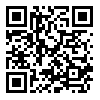Thu, Jan 1, 2026
Volume 7, Issue 4 (Autumn 2021)
Iran J Neurosurg 2021, 7(4): 191-196 |
Back to browse issues page
Download citation:
BibTeX | RIS | EndNote | Medlars | ProCite | Reference Manager | RefWorks
Send citation to:



BibTeX | RIS | EndNote | Medlars | ProCite | Reference Manager | RefWorks
Send citation to:
Seddighi A S, Rahimi Baqdashti H, Seddighi A, Hosseini M, Hosseini M, Zali A et al . Developing a 3D Reconstruction System for Surgical Planning in Neurovascular Surgery. Iran J Neurosurg 2021; 7 (4) :191-196
URL: http://irjns.org/article-1-274-en.html
URL: http://irjns.org/article-1-274-en.html
Amir Saied Seddighi1 

 , Hesam Rahimi Baqdashti1
, Hesam Rahimi Baqdashti1 

 , Afsoun Seddighi *2
, Afsoun Seddighi *2 

 , Morteza Hosseini1
, Morteza Hosseini1 

 , Mostafa Hosseini1
, Mostafa Hosseini1 

 , Alireza Zali1
, Alireza Zali1 

 , Shiva Jamshidi1
, Shiva Jamshidi1 




 , Hesam Rahimi Baqdashti1
, Hesam Rahimi Baqdashti1 

 , Afsoun Seddighi *2
, Afsoun Seddighi *2 

 , Morteza Hosseini1
, Morteza Hosseini1 

 , Mostafa Hosseini1
, Mostafa Hosseini1 

 , Alireza Zali1
, Alireza Zali1 

 , Shiva Jamshidi1
, Shiva Jamshidi1 


1- Functional Neurosurgery Research Center, Shohada Tajrish Comprehensive Neurosurgical Center of Excellence, Shahid Beheshti University of Medical Sciences, Tehran, Iran
2- Functional Neurosurgery Research Center, Shohada Tajrish Comprehensive Neurosurgical Center of Excellence, Shahid Beheshti University of Medical Sciences, Tehran, Iran ,afsounseddighi@gmail.com
2- Functional Neurosurgery Research Center, Shohada Tajrish Comprehensive Neurosurgical Center of Excellence, Shahid Beheshti University of Medical Sciences, Tehran, Iran ,
Abstract: (3832 Views)
Background and Aim: Neurovascular lesions can cause death or disability. Some of them are operable, but surgical approaches are complicated, and proper access to these lesions is crucial. A few of these surgeries occur during the residency educational program, and residents' experience in operating these lesions may be quite inadequate. Using new technologies like 3D-reconstruction of vascular lesion images may result in better training and improve residents' knowledge and understanding of these operations.
Methods and Materials/Patients: Four senior neurosurgery residents were enrolled in this study. They were taught to use a 3D image rebuilding program (3D Slicer). They were then asked to rebuild a 3D image of every patient lesion, practice different surgical views, and review anatomical structures around the lesion before surgery.
Results: All residents mentioned that their knowledge of surgical approaches improved, and they learned more from each operation. Two of them commented that more self-trust during surgeries led to more effective education. Their ability in surgical planning was enhanced too. Attending physicians of these residents believed that this practice improved the residents' skills and educational quality.
Conclusion: New technologies can promote residency educational programs. It seems that working on 3D images of lesions before surgery can boost residents' educational attributes.
Methods and Materials/Patients: Four senior neurosurgery residents were enrolled in this study. They were taught to use a 3D image rebuilding program (3D Slicer). They were then asked to rebuild a 3D image of every patient lesion, practice different surgical views, and review anatomical structures around the lesion before surgery.
Results: All residents mentioned that their knowledge of surgical approaches improved, and they learned more from each operation. Two of them commented that more self-trust during surgeries led to more effective education. Their ability in surgical planning was enhanced too. Attending physicians of these residents believed that this practice improved the residents' skills and educational quality.
Conclusion: New technologies can promote residency educational programs. It seems that working on 3D images of lesions before surgery can boost residents' educational attributes.
Type of Study: Research |
Subject:
Basic Neurosurgery
Send email to the article author
| Rights and Permissions | |
 |
This work is licensed under a Creative Commons Attribution-NonCommercial 4.0 International License. |



